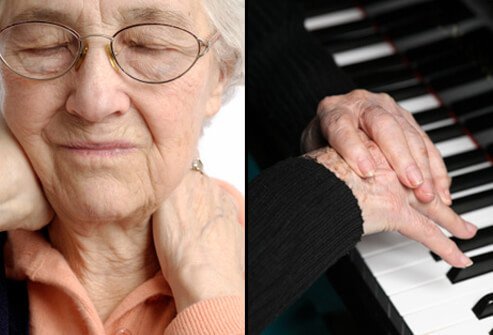What Are the Four Stages of Rheumatoid Arthritis?

The American College of Rheumatology classifies rheumatoid arthritis into four stages, based on the disease progression and radiologic findings:
- Stage I (early RA): X-ray does not reveal any critical changes in the bones.
- Stage II (moderate progression): Radiologic findings reveal minimal destruction of bones and cartilages. Joint movements are restricted.
- Stage III (severe progression): Radiologic evidence suggests extensive muscle wasting and joint deformities.
- Stage IV (terminal progression): Radiologic findings suggest abnormal stiffening and immobility of joints with a fusion of joints (bone ankylosing).
Based on the function of the patient, rheumatoid arthritis can be classified as:
- Class I: Patients can perform daily activities independently.
- Class II: Patients can perform self-care and job-related activities independently, however, the leisure activities may be limited.
- Class III: Patients can perform self-care activities, however, job-related and leisure activities may be limited.
- Class IV: Patients may have limited ability to perform day-to-day tasks.
What is rheumatoid arthritis?

Rheumatoid arthritis is a chronic inflammatory disease characterized by pain and inflammation in joints, typically of the hands and feet. It is an autoimmune disease in which the immune system of the body attacks its own healthy cells, resulting in inflammation of the membrane lining the joints (synovial membrane) and damage to joint tissue.
Rheumatoid arthritis also affects other organs such as the skin, heart, lungs, and eyes. The annual incidence of rheumatoid arthritis is approximately three cases per 10,000 people worldwide.
What is the main cause of rheumatoid arthritis?
The exact cause of rheumatoid arthritis is unknown. However, some of the contributing factors to rheumatoid arthritis are:
- Genetic factors
- Some viruses and infectious agents
- Sex hormones
- Immune system disorder
- Age between 35 and 50 years
- High-risk ethnic background such as Native American
- Female sex
- Periodontal disease
- Bowel infections
- Having a close relative with RA
- Tobacco smoking
- Obesity
What are the symptoms and signs of rheumatoid arthritis?
While rheumatoid arthritis is a chronic disease, there are times when symptoms worsen (flares) and times when the patient recuperates from the symptoms (remission). Some of the most common signs and symptoms of rheumatoid arthritis observed are:
- Pain in the joints of hands and feet
- Pain on motion
- Swelling and tenderness in one or more joints
- Restricted movements of the affected part
- Deformity of the affected parts
- Fever
- Weakness
- Fatigue or tiredness
- Numbness and tingling in the hand or arm
- Osteoporosis (a condition in which bones become weak and brittle)
- Muscle weakness
How can be rheumatoid arthritis diagnosed?
Rheumatoid arthritis can be diagnosed based on its clinical presentation in the joints as well as using the following blood tests:
- Erythrocyte sedimentation rate (ESR)
- C-reactive protein (CRP)
- Complete blood cell count (CBC)
- Rheumatoid factor
- Antinuclear antibody
Radiographic findings are used by the doctor to assess the arthritis progression. The physician may suggest a magnetic resonance imaging (MRI) or joint aspiration for further evaluation.
What is the treatment for rheumatoid arthritis?
The goals of the treatment of rheumatoid arthritis include:
- Pain relief
- Improving the range of motion
- Development of joint strength and stamina
- Preventing joint destruction and deformities
- Providing counseling to the patients
The treatment approach involves treating the disease with medication, education, and lifestyle modifications.
Drugs used to treat rheumatoid arthritis are:
- Nonsteroidal anti-inflammatory drugs (NSAIDs): ibuprofen, naproxen
- Disease-modifying antirheumatic drugs (DMARDs): sulfasalazine, hydroxychloroquine, leflunomide
- Immunosuppressants: methotrexate, azathioprine
- Biologics
- JAK inhibitors
- Corticosteroids: prednisolone
Surgical treatment can be required for severe joint damage.
What are the complications of rheumatoid arthritis?
Rheumatoid arthritis can lead to the following complications:
- Anemia
- Infection
- Stomach distress
- Osteoporosis
- Lung inflammation
- Heart disease
- Cancer
- Dry eyes and dry mouth
- Enlarged spleen
- Joint destruction and loss of function
Rheumatoid arthritis is not curable but with appropriate treatment, the disease can be controlled. Treatments are most effective when initiated early in the disease.
